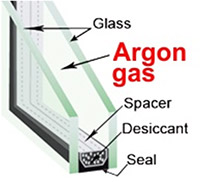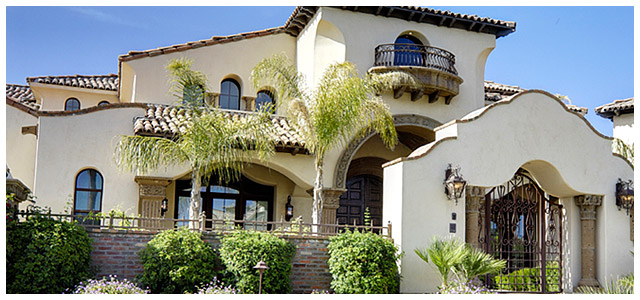Gas Filled Windows FAQ
Are Gas Filled Windows a Popular Option Today?
It’s a technology that has been around a long time, and it’s become popular because energy codes are more stringent. Most codes are designed as performance standards, meaning they set a standard that must be met and allow the manufacturer to meet it however works best. Many find the best way to do that is with gas-filled windows.
What Do Filled Windows Offer?
Added energy efficiency is the key benefit to having gas-filled windows. The gas acts as an insulator, working in both summer and winter to keep interiors protected from outside temperatures. Typically, gas infusion is provided in conjunction with applying a low-emissivity (low-E) coating film to the glass panes.
The other key advantage is making people’s homes more comfortable. The low-E coating and gas keep the interior pane of glass closer to the temperatures of the interior air, minimizing air currents that are created when different temperatures come into contact. This reduces drafts and cold spots.
Benefits of Argon Gas Windows
Argon is the gas most often used between panes in a double- or triple-glazed window. The gas is colorless and odorless. Argon is denser than the atmosphere, providing more thermal efficiency than having air between the panes, he explains.
Other Types of Gases
Krypton gas is denser than argon, and xenon gas is denser than krypton, providing somewhat more thermal efficiency. Some manufacturers may offer a mixture of two gases.
Is the Gas Harmful if It Leaks?
No. The gases are inert (nonreactive) and occur naturally in the Earth’s atmosphere. Argon, the most common, comprises about 2 percent of the air we breathe.
What if the Gas Leaks Out Over Time?
Members of IGMA use standards created by ASTM International to certify against leakage. The major window companies certify their windows.
Even if a small amount of gas does leak, it won’t hurt the window’s performance, says John Swanson, editor of Window & Door magazine, which is published by the National Glass Association (NGA).
Studies show that even if 80 percent of the gas remains, it will still maintain its effectiveness, he says. So, even if 1 percent was leaking out per year, the window would still be effective in 20 years. Should the window lose all of its gas, Lingnell adds, it might be noticeable due to condensation on the windowpane or fog inside the pane.
How Much Do Gas-Filled Windows Cost?
 Determining the incremental price of gas filling and its resulting payback or return on investment depends on many variables, including the size of the window, materials used, glazing options, location and climate conditions. Some manufacturers provide an upgrade package that includes both low-E coating and argon gas. To find out which combination of Gas Filled and Low E options work best for your home, give us a call and schedule an appointment with our window and door professionals today!
Determining the incremental price of gas filling and its resulting payback or return on investment depends on many variables, including the size of the window, materials used, glazing options, location and climate conditions. Some manufacturers provide an upgrade package that includes both low-E coating and argon gas. To find out which combination of Gas Filled and Low E options work best for your home, give us a call and schedule an appointment with our window and door professionals today!

